5 Surprisingly Simple Homesteading Tips
This article will give you 5 simple homesteading tips you can use to save a bit of time and money on your own homestead. Homesteading doesn’t always have to be sweet, sore muscles, and hard work sometimes, it can be simple, and that is what today is all about.
You can use these simple homesteading tips to do more on your homestead and get one step closer to living a simple life.
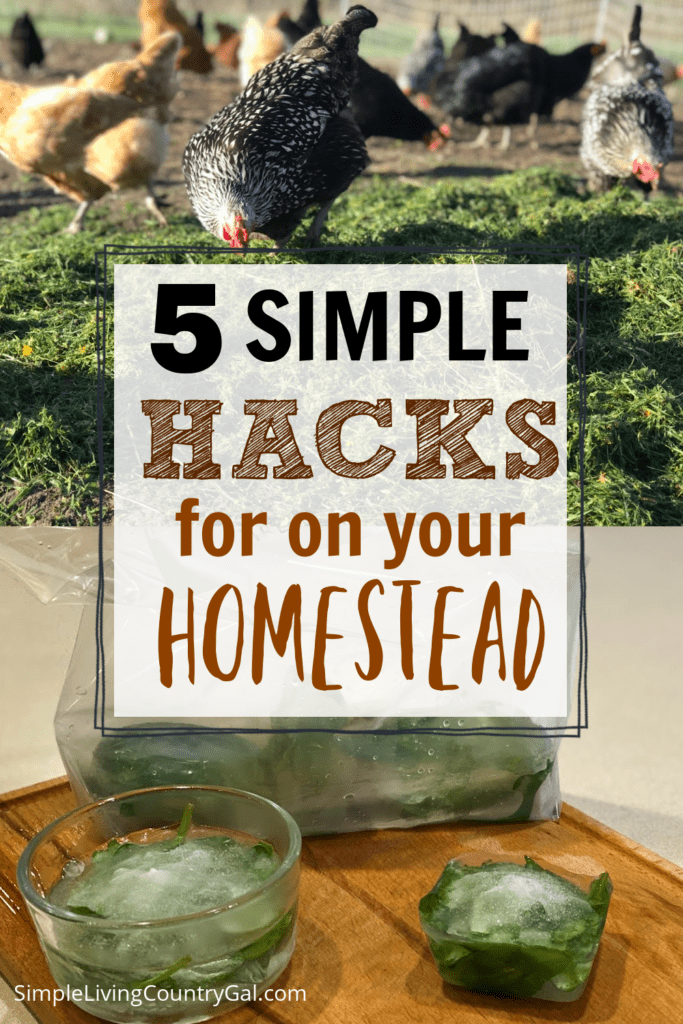
When it comes to raising animals and growing your own food there are so many things to learn and know. I have found over the years that tips from others really have helped me in my own homesteading journey.
I hope to do the same for you by sharing what I have learned along the way.
It’s true that not all of my simple homesteading tips are life-changing and need to be shouted from the rooftops.
In fact, quite a few of my tips are surprisingly simple. But those tips, the simple ones, are sometimes the tips that make the biggest impact.
Surprisingly Simple Homesteading Tips
If you haven’t set up a resource library in your home yet, I want to encourage you to do that now. Having a place to go that is full of books, tips, and help whenever you need it is more valuable than I can say.
You can add homesteading books, frugal living books, and a binder where you can print out tips you love that you can refer to later on.

Simple Homesteading Tip #1 For Your Chickens
When you free-range your hens calling them into the safety of the coop at the end of the day can be hit or miss.
Free-ranging simply means allowing your chickens to roam a specific area or your entire property throughout the daylight hours. Free-ranging is a great way to allow your chickens the ability to scratch up bugs, worms, and other tasty treats. By doing so they will be healthier and happier hens that will lay you bigger and tastier eggs.
The good news about allowing your chickens to free-range is that it encourages them to eat for free. The better news is they do a great job of keeping down pests that can invade and even harm your vegetable garden. The downside is your entire flock will be more easily reached by any predators in your area.
For this reason, teaching your entire flock to come when called is a great way to keep everyone safe.
You can teach your chickens to come when called by repeating a word and sound every time you feed them. Since chickens LOVE to eat they will quickly learn that the sound and the words you use are a trigger for food. These will be their “cues” and ones they will quickly respond to.
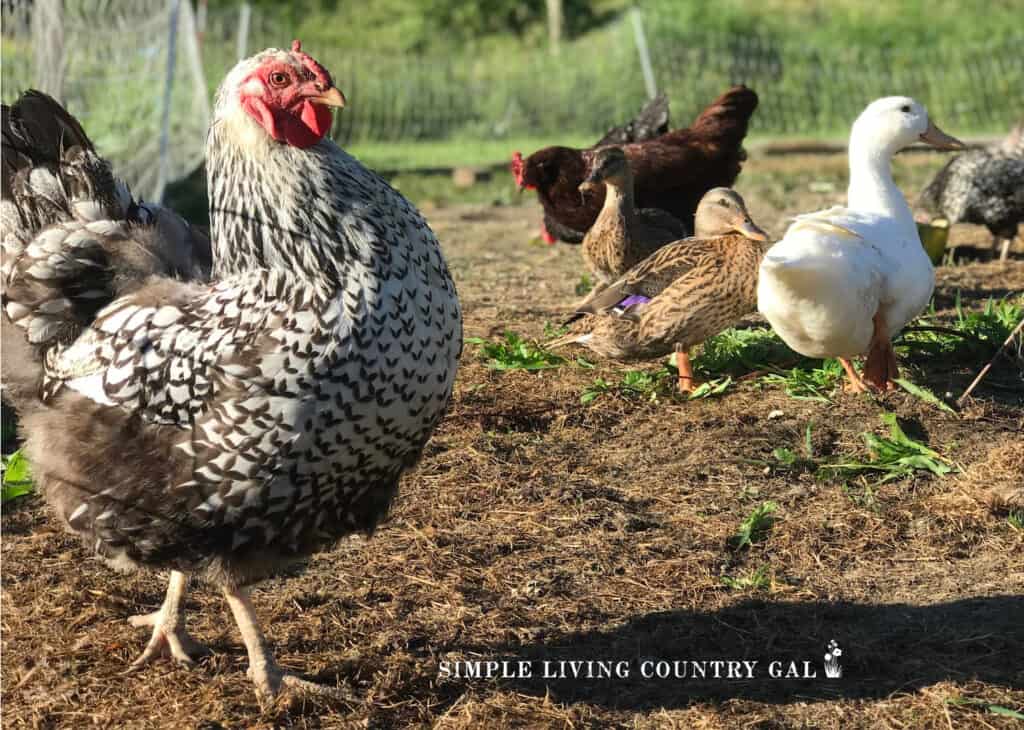
Chickens are very food motivated so this is great news for us as we are working to train them.
Put it into action: Each time you feed your flock, repeat a word over and over along with a distinct tone in your voice. I like to use “chick-chick-chick” while shaking a bucket of grain. The sound the grain makes in a bucket really does carry and can be heard by any chickens that might have wandered off.
Using this call at night.
It’s true that chickens will usually return to the coop at dusk, but sometimes not everyone makes it back safely. If you happen to notice that one of your flock did not come back try doing a quick hen call, “chick, chick, chick” while shaking a bucket of seed.
If it is not too dark out, this tip will usually work pretty well. If it doesn’t work, your next step is to take a walk around your home and do a quick search. Hens naturally prefer to be off of the ground at night, so take a peak in your trees to see if she is there. I have found many a hen this way.
Simple Homesteading Tip#2 Cooling Treats
On hot summer days, it is nice to have cool treats for not only your chickens but other livestock as well. This can help them to cool off along with keeping them hydrated at the same time.
One of the most common reasons why animals get sick is dehydration for this reason, you will always want to be sure you have fresh water for your animals at all times.
Chickens and heat.
Chickens can tolerate the warm weather quite well but hot weather is another story. A good outside temperature is around 74 degrees and your entire flock will be quite comfortable in those temps.
However, a long stretch of very warm to hot days can cause your chickens some discomfort which can, in turn, slow down their egg production.
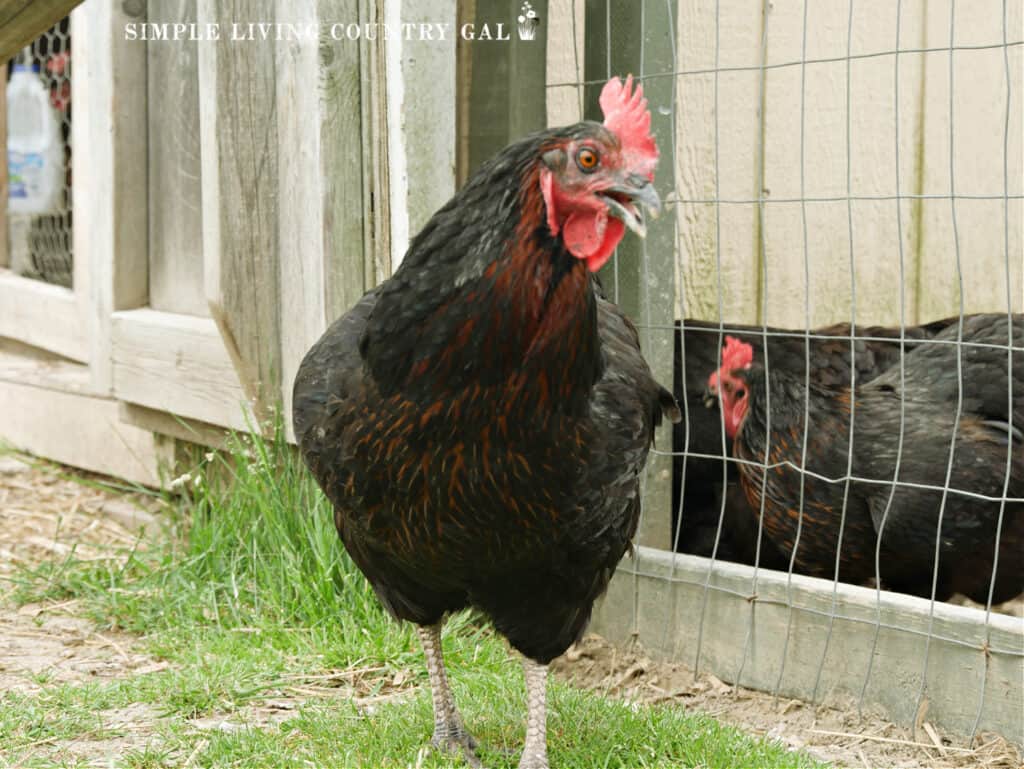
How do you know if your chicken is overheated?
Since chickens cannot sweat you can tell if your chicken is overheated if you see them panting with their beaks open slightly. Other clues are acting lethargic and having pale wattles and combs.
This is why offering cool treats on those hot days can be so beneficial.
What do chickens like to eat?
Vegetables seem to be at the top of every chicken’s favorite list. I like to freeze leftover veggies from dinners that just aren’t enough to save for ourselves. You can keep freezer bags of frozen scraps inside of your freezer.
All you need to do is put a handful of vegetable scraps in a bowl and cover it with water. Allow it to freeze until solid. Remove and put into a freezer bag that you can now keep in your freezer until you have a hot day.
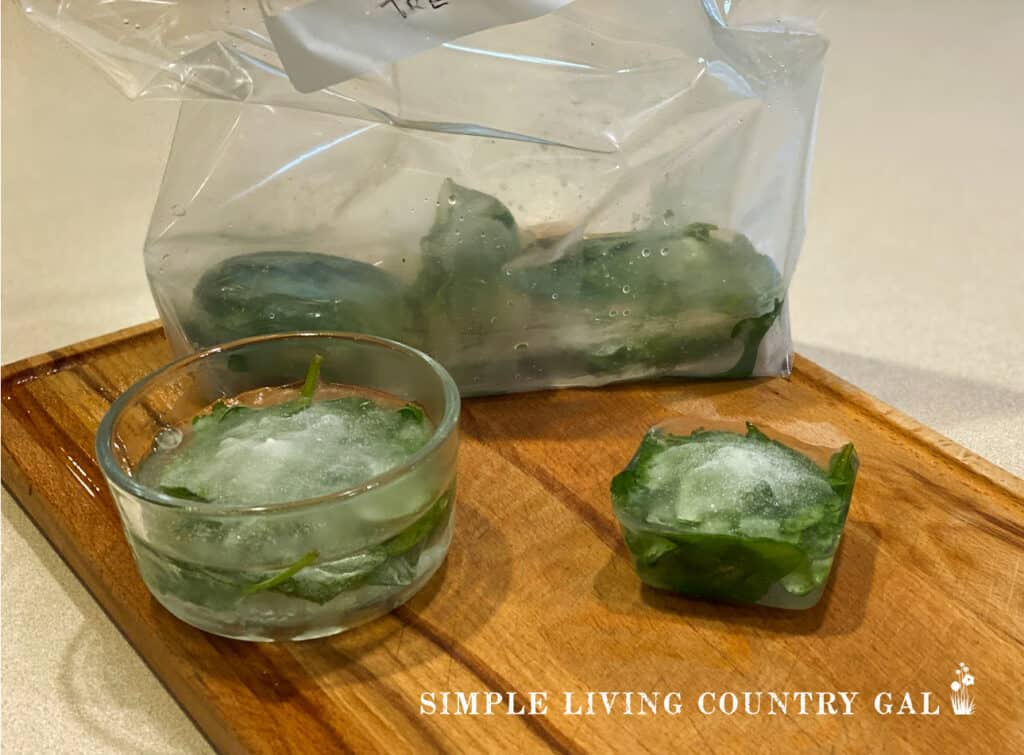
My girls love frozen snacks to munch on in the summer and it really does help to cool them off. A few ideas are, vegetable peels, watermelon or cantaloupe finds, apple cores or peels, and even squash ends and corn cobs.
But don’t stop there!
You can save overly ripe fruit or rinds, extra vegetable soup, rice without sugary sauces, just about anything that isn’t enough to save for your family can be frozen for your chickens. Food never gets thrown away at our home. There is always someone or something that will eat what we have.
SLCG PRO TIP: Remember to only feed foods that are good for your hens. Salty snacks, processed meats, and sugary items such as cookies or cereal are not good for your chickens. Also, rotten foods or moldy, spoiled foods are not a good idea either.
Simple Homesteading Tip #3 – Healthy Plants
Do you have planters of beautiful flowers, vegetables growing in containers, or even straw bale gardens out on your porch or back deck? If you forget to water those plants you can easily lose them in the hot summer sun.
This was something I struggled with remembering so much when I first started gardening. If this sounds like you, use this simple tip.
Set my alarm on your FitBit, Amazon Alexa, or even your Smart Phone to go off every day at 8 am. This gentle reminder will be just what you need to make sure your plants stay healthy all summer long.
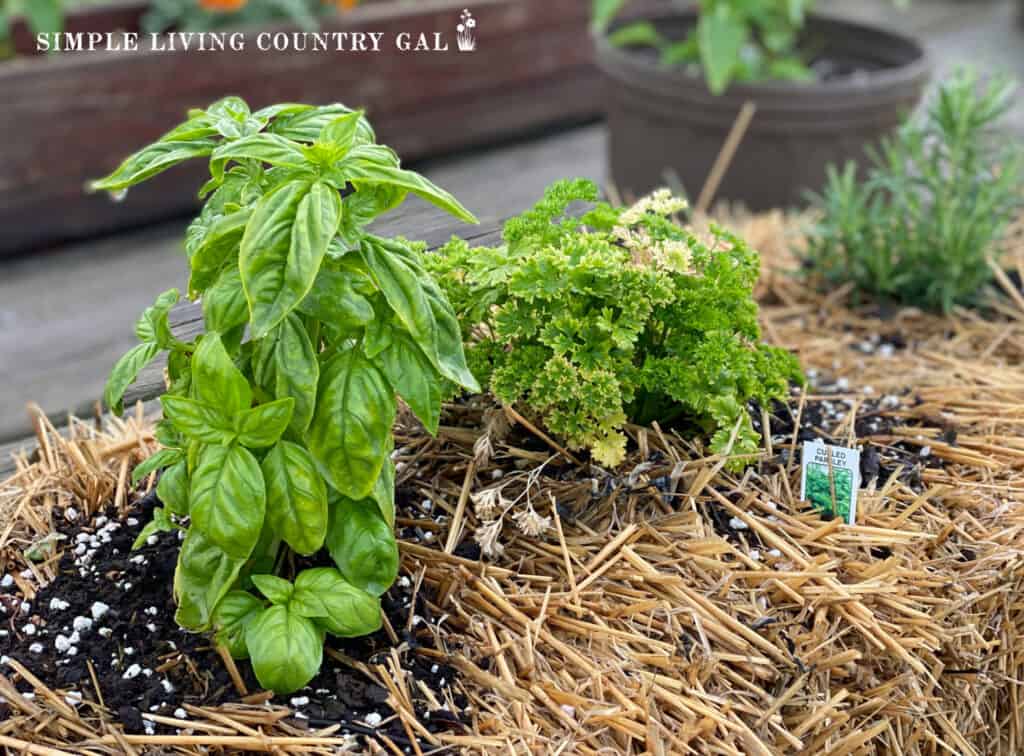
Watering your plants should be a part of your morning routine. While you are watering take the time to check on the health of all your plants.
To check a plant’s health inspect the leaves. Touch them and turn them over looking at the underside as well. If you see any spots, discoloration, eggs, bites, or bugs you can take action before things get out of control.
SLCG PRO TIP: Very hot sun can really damage a potted plant quickly. If you know the day ahead will be a hard one, take time to move your planters where there is full or partial shade. You can put them under a lawn chair or table on your porch or patio. This will give your plants a break from the hot sun.
Simple Homesteading Tip #4 – Goats and Milk
One of the biggest things I learned when I first started raising goats is fresh milk in a barn will absorb any smells or odors that are around at the time. And I am not talking in a big chunk of time either. I am talking in just a few short minutes you can completely alter the taste of your milk.
There is nothing worse than drinking a glass of milk that has a slightly off-taste. One of my favorite tips is also a super easy one and a great fix if you find your goat’s milk tasking off from time to time.
In order to preserve the fresh taste of fresh milk, you want to cool that milk down as quickly as possible. For me I like to go all out to ensure I can cool my milk of quickly. The night before milking I will put few mason jars in the fridge or freezer.
In the morning when I go out to milk I put those jars into a soft cooler with a few bags of frozen peas. Once I finish milking a goat, I pour the milk from the pail into one of my cold jars.
More Goat Resources:
- How to Get the Best Tasting Goat Milk Every Time
- What to do When Your Goat Doesn’t Want to be Milked
- DIY Goat Playground
This will jump-start the cooling process preserving that fresh milk taste. The quicker you cool the milk down the better it will taste.
SLCG PRO TIP: If you only milk 1-2 goats you can also milk directly into the cold jars if you want to skip a step. Remember to use milk or coffee filters the strain the milk before you drink to remove any dust or debris.
When you bring your fresh milk into your home you can filter it into another frozen jar keeping that cooling process going. I like to use 1/2 gallon-sized mason jars with white plastic reusable lids. This way I can write the date on the lid with a marker so I know how fresh each jar of milk is.
Finally, once filtered you can put that jar into an bowl of ice water in your refrigerator. I know this sounds like a lot of extra work, but actually, it isn’t and the result is the best and most delicious milk ever.
Getting that milk cold as fast as possible is the best way to make sure it tastes great every time and this one tip really helps get that milk cold and fast.
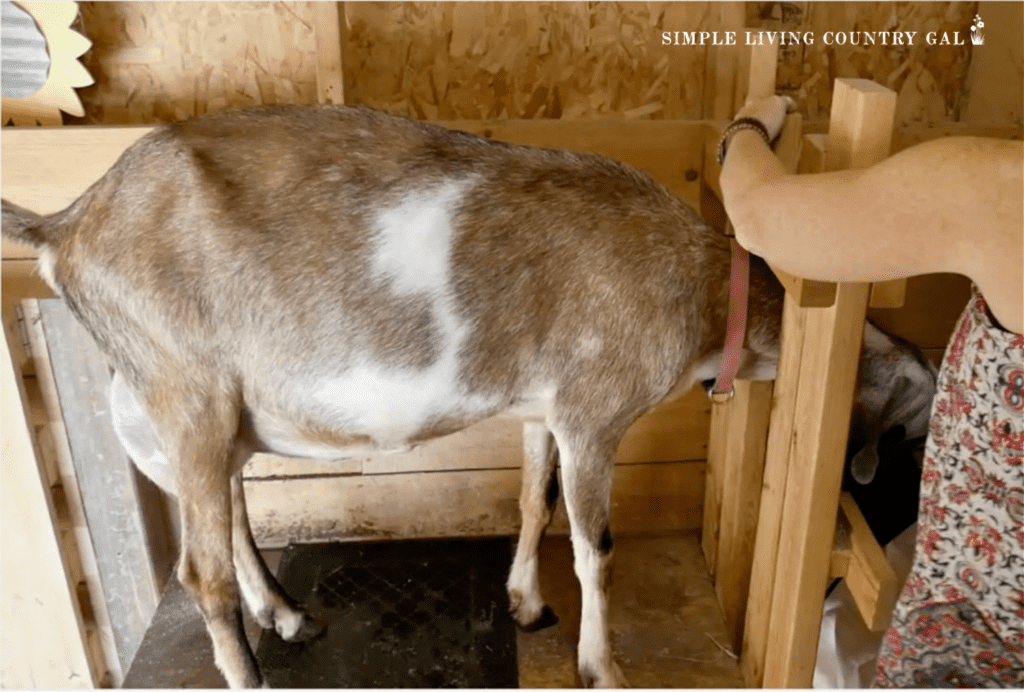
Simple Homesteading Tip #5 – Chicken Eggs
Did you break an egg while out collecting them in your chicken coop? I think that might just be as bad as spilled milk in the life of a homesteader. Or, even worse, did you wait too long in the winter, and now some of your eggs have frozen solid?
Don’t throw them away!
Scramble them up, and give them to your hens for a healthy snack. Add a few fresh herbs to those eggs and give your gals a nice warm treat. Eggs are an excellent source of protein and a wonderful snack for your hens.
READ: How to Keep Eggs From Freezing in Winter
Since I have a larger flock I will put any cracked, broken, or heavily soiled eggs into a glass mason jar and store them in my refrigerator. Once a week I will scramble the eggs up and take them out to my hens.
My chickens love scrambled eggs and it’s funny how they always seem to know I am bringing some out. They run around my legs as I am walking to the coop just so they can be the first to snag a treat.
Hot scrambled eggs on a frigid cold winter morning is a great way to warm up your hens.
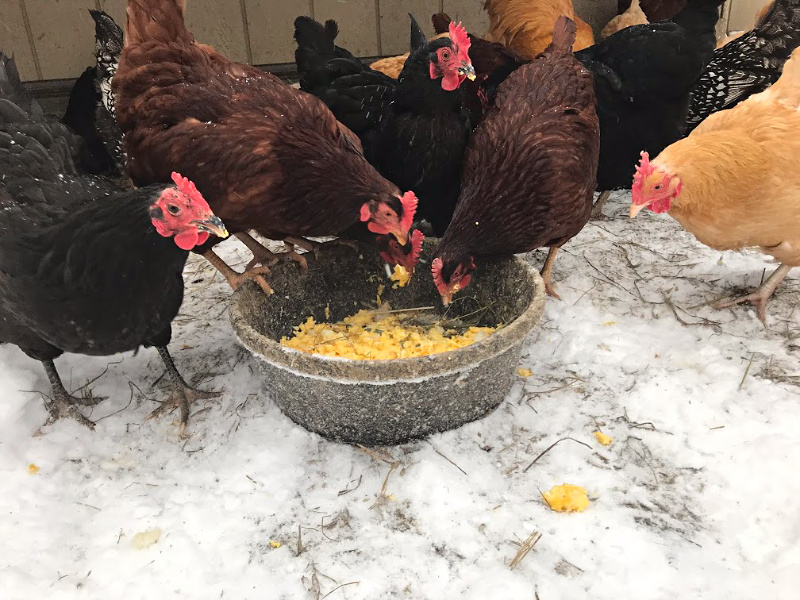
When you are homesteading it is important to think outside the box.
This outlook can help you find new uses for worn-out things that you may normally throw away. “Use it up, wear it out and make do” will go a long way to saving money and becoming a more self-sufficient homesteader.
It is all about living on what you have and really thinking outside of the box. Gather useful advice so you have those tips ready to go when you need them.
Do you have any simple homesteading tips that have helped you? Leave a comment below, I would love to hear from you!
More Homesteading Resources:
- 15 Ways to Homestead No Matter Where You Live
- Planning Projects on the Homestead
- Realistic Ways to Make Money With Your Homestead



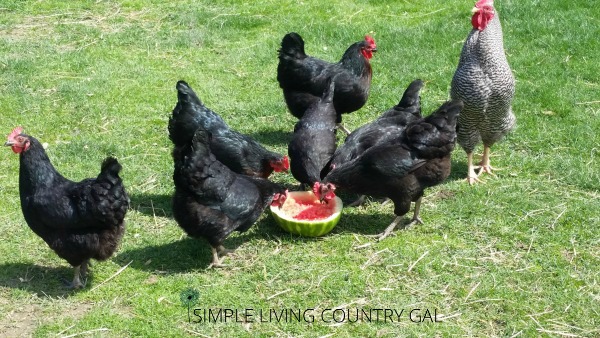
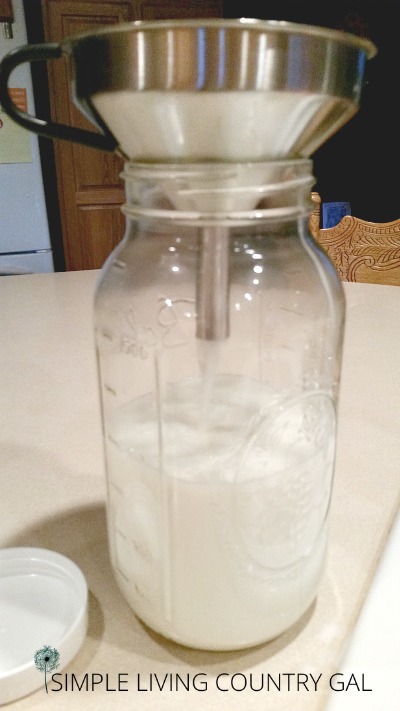
Been a farmer’s wife for 40 year. Had my chickens, sheep and my own dairy cows, 12, in all. Husband did the farming, wheat soya beans and maize, 500ha under irrigation. Yes big and busy and very hands on.
Miss those days and life so much.
Hi, Neva,
Yes, it is hard work but so very rewarding. I love my homesteading life!! However, my hubby is a farmer’s husband. haha 🙂
Thanks for stopping by,
Tracy Lynn